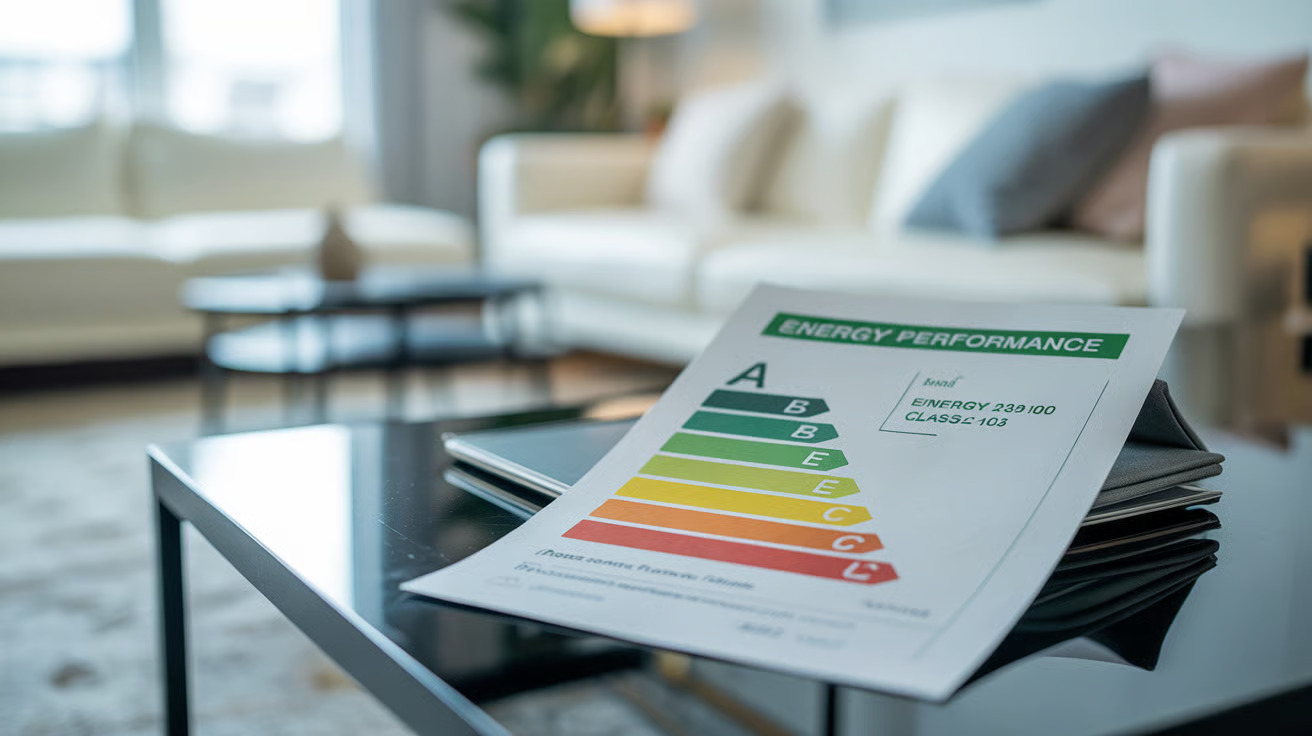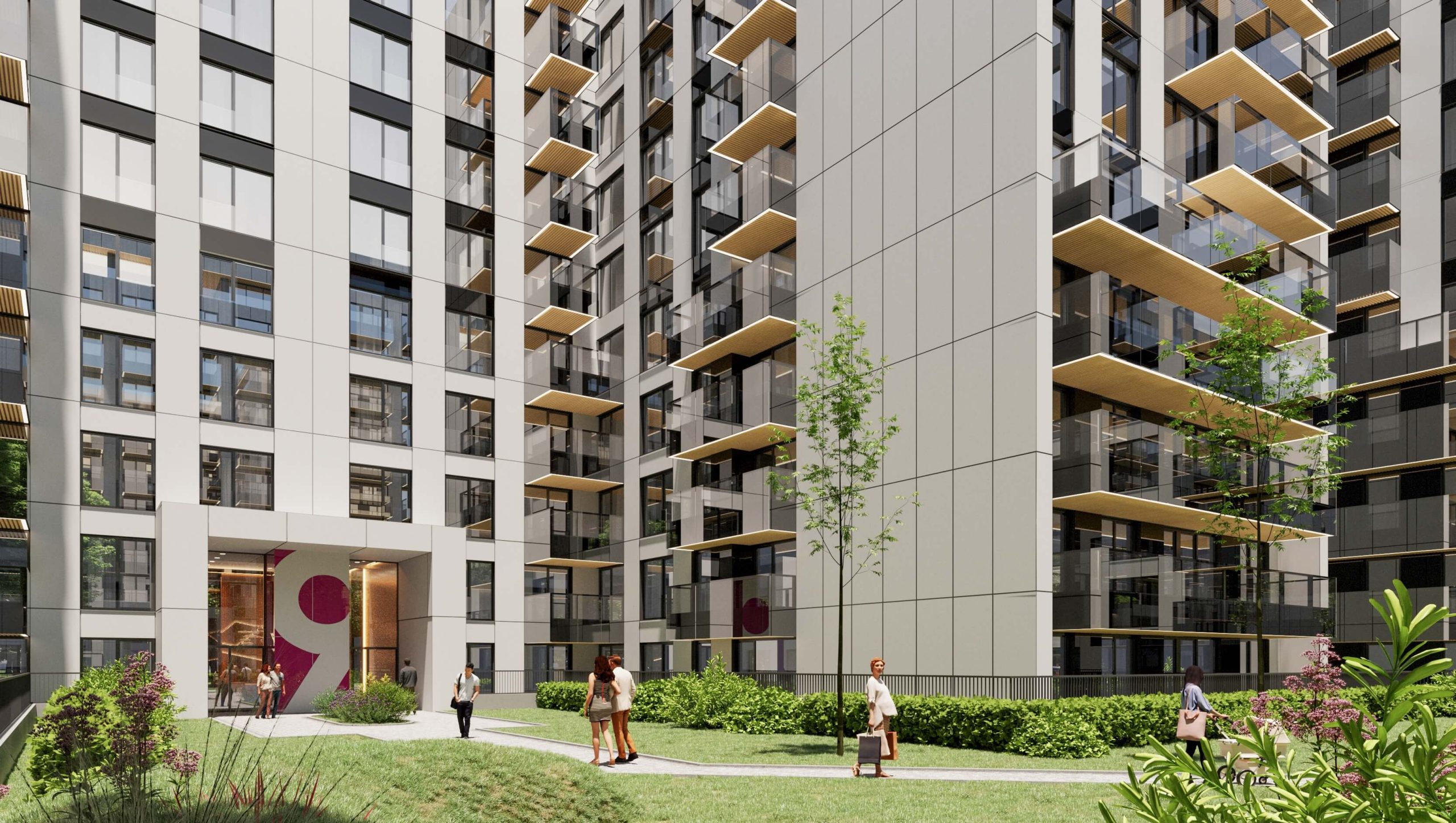When you’re thinking about buying or renting an apartment, the energy class should be an important factor. It shows how energy-efficient the property is and directly impacts your monthly costs and the long-term value of the property.
What is the energy class and the energy performance certificate
The energy class of an apartment is an indicator of its energy efficiency, similar to the labels on home appliances. This classification gives you a clear idea of how much energy the property consumes and helps you estimate maintenance costs. But what exactly does the energy certificate represent and why is it important?
The Energy Performance Certificate, also called the energy certificate, is an official document certifying the energy performance of a building. It includes detailed information about:
- Primary and final energy consumption
- CO₂ emissions
- Recommendations to improve energy efficiency
- Energy classification
In practice, the energy certificate classifies properties based on their annual energy consumption, expressed in kWh/m²/year. The classification ranges from class A (most efficient) to class G (least efficient), helping you quickly identify low-energy properties.

Classification of energy classes and their meaning
To better understand what each energy class means, let’s take a look at how the classification system works and what it implies for you, as an owner or tenant of a two-room apartment or any other type of apartment. Which is the best energy class and what advantages does it offer?
Energy Class A – Maximum Efficiency
Apartments in class A are the most energy-efficient. With a consumption of up to 125 kWh/m²/year, these properties offer:
- Minimal energy bills
- Consistent thermal comfort all year round
- Reduced environmental impact
Energy Class B – Good Performance
Properties in this class are energy efficient and a good choice for those seeking comfort and savings.
Energy Class C – Average Performance
Many older apartment buildings that have undergone improvements fall into this category. It represents a balance between cost and efficiency.
Energy Class D – Below Average
Apartments in class D consume more energy and may require investments to become more efficient.
Energy Class E – Poor Performance
Properties in class E often have insulation and heating system issues, resulting in high energy bills.
Energy Classes F and G – Very Poor Efficiency
These classes reflect very low energy performance, high costs, and a negative environmental impact. Major renovations are needed to improve efficiency.
The impact of the energy class on energy consumption and bills
The difference between energy classes is directly reflected in your utility bills. An apartment in class A can consume up to 6 times less energy than one in class G. This difference translates into significant monthly savings. But how large are these savings, exactly?
For example:
- A three-room apartment of 70 sqm in class A: approx. 8,750 kWh/year
- The same apartment in class G: over 57,400 kWh/year
This difference means savings of hundreds or even thousands of lei per year. In the long term, an apartment with a good energy class is a smart investment.
Additionally, energy-efficient apartments offer better thermal comfort with consistent temperatures, which contributes to a more pleasant living experience. Whether you’re looking for a studio apartment, a garden apartment, or a small cozy space, choose one with high energy efficiency!
What factors influence energy efficiency?
The energy efficiency of your apartment depends on several important factors that help reduce energy losses.
Thermal insulation
It is the main barrier against heat loss. Good insulation can reduce energy consumption by up to 40%, making it the most important investment for energy efficiency.

Window quality
Windows with double glazing and good frames reduce heat loss. Old windows can be responsible for up to 25% of heat losses.
Heating systems
Modern boilers or efficient centralized heating systems help reduce consumption. New technologies can improve efficiency by 20–30% compared to older systems.
How the energy class affects the selling or rental price
On a scale from A (very efficient) to G (very inefficient), this classification directly influences the perception of buyers and tenants, and therefore the asking price and the time required to complete a transaction.
Advantages for energy-efficient properties (classes A, B, C)
1. Higher selling prices
Homes with a higher energy class can be valued up to 5–15% more compared to similar but less efficient ones. They are perceived as:
- More modern
- Better insulated
- Equipped with efficient heating and cooling systems (heat pumps, condensing boilers, etc.)
2. Shorter time on the market
Apartments in classes A or B sell and rent faster because buyers are attracted by the idea of lower bills and improved comfort. Real estate investors increasingly target such properties, like four-room apartments.
3. Tenants willing to pay more
In a context of rising energy prices, many tenants are willing to pay a higher monthly rent in exchange for lower utility costs.
4. More stable resale value
In the long term, energy efficiency ensures slower depreciation, especially in the context of new European regulations penalizing inefficient buildings.
Challenges for inefficient properties (classes F, G)
1. Difficulties in selling or renting
Properties with poor energy ratings can stay on the market for months without offers, especially in major cities with competitive listings.
2. Significant price reductions
To attract potential buyers, owners often need to lower the price by 10–20%, mainly due to high heating and maintenance costs.
3. Renovation negotiations
More and more buyers ask for additional discounts to cover the cost of energy upgrades: replacing windows, adding insulation, changing the boiler, etc.
Financing opportunities for energy-efficient homes
1. Green Mortgages
Some banks in Romania and the EU offer:
- Interest rates 0.1–0.3 percentage points lower
- Reduced down payments
- Consultancy for obtaining the energy certificate
These benefits are conditional on:
- Presenting an energy certificate with class A or B
- Sometimes, additional documentation about system efficiency (solar panels, heat pumps, etc.)
2. Governmental or EU programs
Through programs like ‘Casa Verde’ or PNRR funding, homeowners can access grants for renovations that improve energy performance. These investments can automatically increase property value and upgrade the energy class.
What is the energy performance certificate and when is it mandatory
The Energy Performance Certificate (EPC) is an official document that certifies the energy efficiency of a building or building unit. It is issued by an authorized energy auditor and is valid for 10 years, provided no major modifications affecting the building’s energy consumption are made.
The document reflects the energy needed for heating, cooling, lighting, ventilation, and hot water, and classifies the property into an energy class.
Când este obligatoriu certificatul de performanță energetică?
In Romania, the law requires obtaining and presenting the energy certificate in several situations with legal and financial impact:
1. When selling a property
The certificate must be presented before signing the sale-purchase contract. Without it, the transaction can be annulled by court upon request.
2. When renting an apartment or space
The owner must provide the tenant with the energy certificate. Failure to do so can lead to contract annulment or prevent official registration.
3. For new buildings
For construction completion approval, the building permit must be accompanied by the energy certificate, as part of the final technical documentation.
4. After major renovation works
If significant changes are made (insulation, heating systems, installations), the energy certificate must be updated to reflect the new performance.
5. For public buildings over 250 sqm
Public institutions are legally required to display the energy certificate in a visible place to ensure transparency regarding the building’s energy consumption.
What information does the energy certificate contain?
The certificate is a technical document, but it offers essential information for owners, buyers, or tenants. It includes:
– The property’s energy class (from A to G), indicating overall efficiency
This is expressed on a scale from A to G and reflects the overall efficiency of the home.
– Annual specific energy consumption (kWh/sqm/year), giving a clear cost estimate
It is expressed in kWh/m2/year and provides a clear picture of potential energy-related expenses.
– CO₂ emissions – relevant for environmental impact, these values are especially important in the context of European emission reduction policies.
Relevant for environmental impact, these values are especially important in the context of European emission reduction policies.
– Technical recommendations for improvements: additional thermal insulation, changing joinery,modernizing installations or installing renewable sources.
Concrete suggestions are offered, such as additional thermal insulation, changing joinery, modernizing installations or installing renewable sources.
– Estimated costs for modernization – the auditor may include an approximation of the investmentsneeded to raise the energy level of the building.
The auditor may include an approximation of the investments needed to raise the energy level of the building.
What happens if you don’t have an energy certificate?
The lack of this document can have serious legal and financial consequences:
– Invalidated transactions
Sale-purchase or rental contracts may be considered void if the certificate is not present at the time of signing.
– Fines and sanctions
Authorities may apply administrative fines for not having the certificate, especially in the case of public institutions or new buildings.
– Loss of opportunities
Without a good certificate, potential buyers may request significant discounts or even withdraw from the transaction. Also, the absence of the document can exclude the property from certain platforms or banking offers (green loans, financing programs).
How do you obtain the energy performance certificate?
The process is simple but must be followed carefully:
- Contact an energy auditor authorized by the Ministry of Development.
- Provide the necessary documents (plans, blueprints, technical details about the building).
- Allow the auditor to perform an on-site inspection.
- You receive the certificate in both electronic and physical format, signed and stamped.
The price of a certificate varies depending on the size of the property, the complexity of the construction, and the county in which it is located.
Tips for improving the energy class of an old apartment
If you have an apartment with a low energy class, there are several actions you can take to improve its efficiency. What are the most effective methods and how can you get started?
Top Priority: Thermal Insulation
Insulating exterior walls is the best investment. You can choose between:
- External insulation (more efficient, but requires association approval)
- Internal insulation (easier to do individually)
- Attic or ceiling insulation
Window Replacement
Double-glazed windows can reduce heat loss by up to 25%. The investment usually pays for itself in 5–7 years through energy savings.

Heating System Modernization
A new heating system can significantly improve energy efficiency. You can opt for modern boilers, heat pumps, or hybrid systems. What are the pros and cons of each option and how can you make the best choice?
Other Measures
- Use LED light bulbs
- Install programmable thermostats
- Seal cracks and leaks
- Use thermal curtains
How to Plan Your Investments
To achieve the best results, prioritize investments as follows:
1. Start with insulation
2. Replace windows
3. Upgrade the heating system
4. Apply other supporting measures
Understanding the energy class of apartments is crucial for making informed decisions and contributing to a greener future. By optimizing energy consumption, you not only reduce costs but also help protect the environment.




